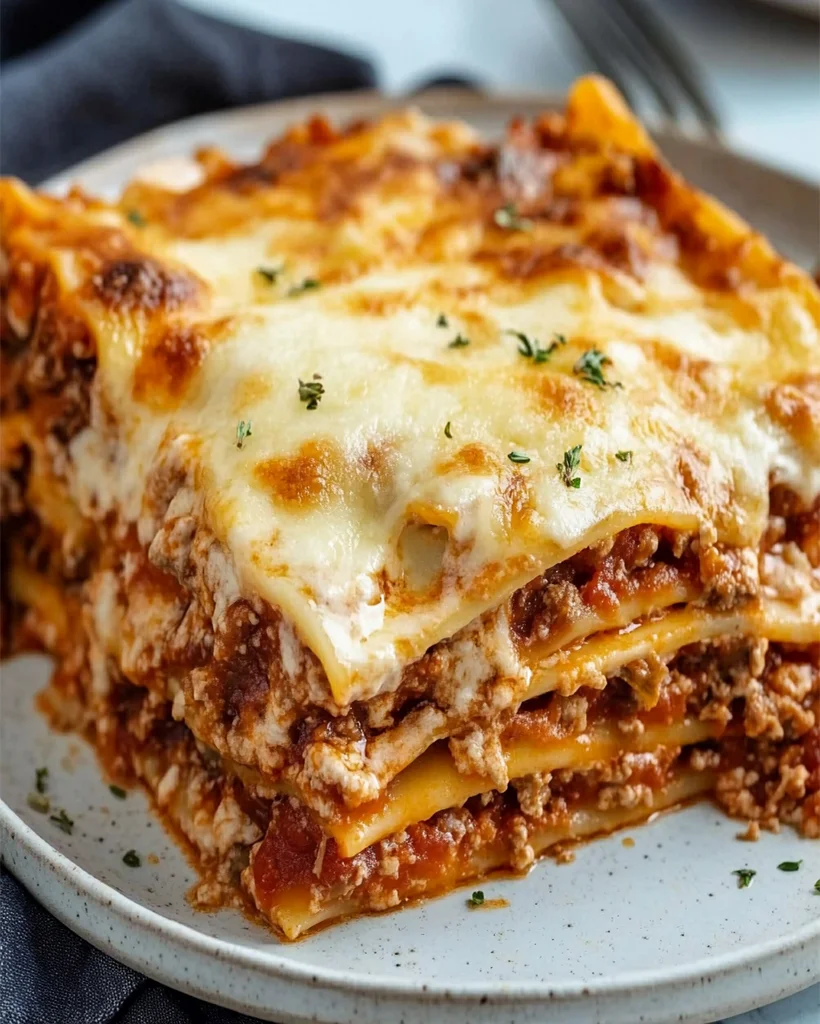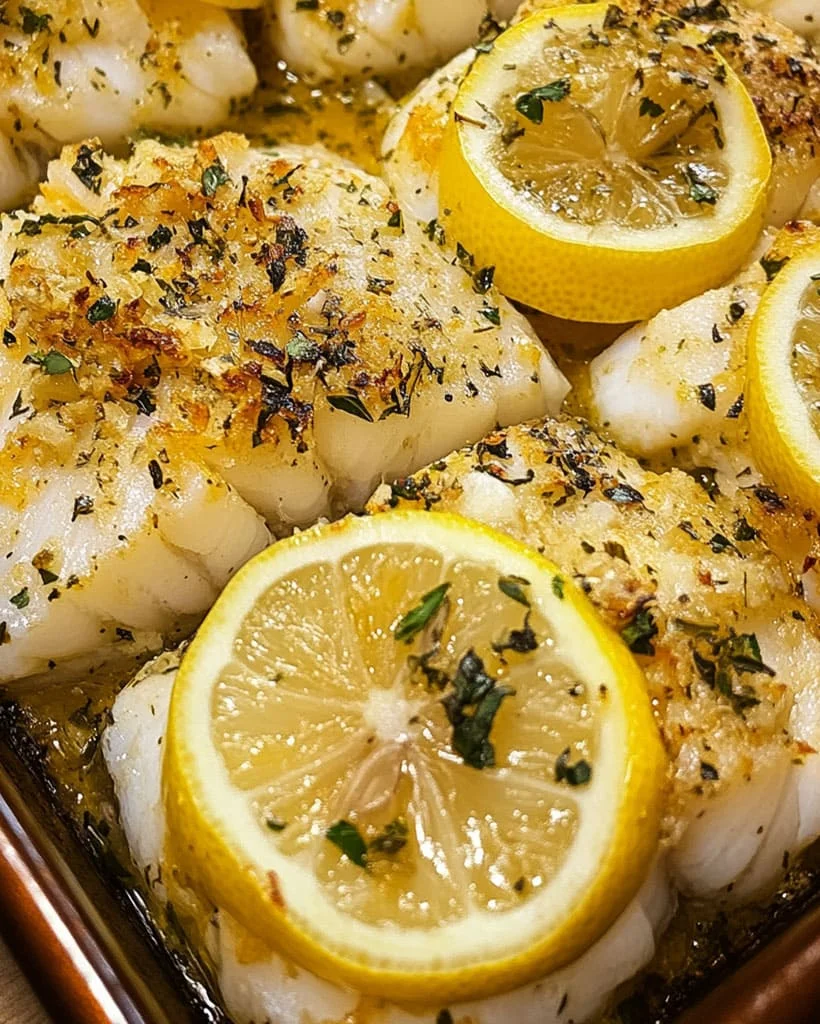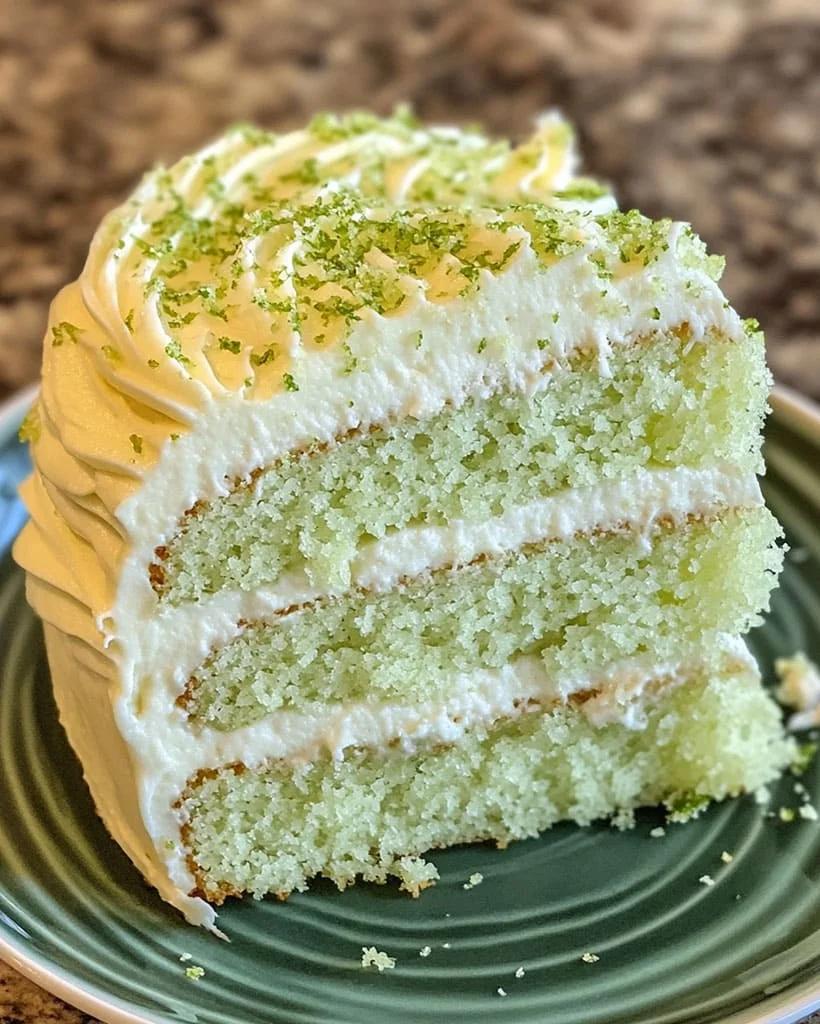Welcome to a taste of authentic Italy! Today, we’re diving into a beloved dish, the Classic Tuscan Lasagna. This hearty recipe will transport you straight to a traditional Tuscan kitchen, where families gather for Sunday lunch or holiday feasts to savor the rich flavors of homemade Ragù and creamy Béchamel sauce.
Introduction
Lasagna is a staple of Italian cuisine, but the Tuscan Lasagna stands out for its unique blend of flavors and rich textures. Made with layers of Tuscan Ragù, creamy Béchamel sauce, and freshly grated Parmigiano cheese, this dish represents the heart of Italian comfort food. Its origins are deeply rooted in the kitchens of Northern Italy, where it has been passed down through generations as a Sunday and holiday favorite. Whether you’re a fan of Italian cuisine or simply love indulgent, baked pasta dishes, this recipe is a must-try.
Ingredients for Classic Tuscan Lasagna
To create this delicious dish, you’ll need the following ingredients:
- 3 lbs Tuscan Ragù (see notes for recipe)
- 1 package of lasagna sheets (about 4 portions of fresh pasta)
- 2 cups Parmigiano cheese, grated
For the Béchamel sauce:
- 4 cups milk (room temperature or warm)
- ½ cup butter
- ½ cup flour
- Salt, to taste
- Black pepper, to taste
- Nutmeg, ground (a pinch)
Optional Substitutions:
- For a gluten-free option, use gluten-free lasagna sheets and replace regular flour with a gluten-free alternative.
- To make it dairy-free, substitute butter with vegan margarine and use a plant-based milk of your choice.
How to Make Classic Tuscan Lasagna – Step by Step
Step1: Prepare the Béchamel Sauce
- In a medium-sized pot, melt the butter over low heat. Once fully melted, add the flour and stir continuously to form a paste (roux).
- Cook the roux for 1-2 minutes until it starts to thicken.
- Gradually whisk in the warm milk, making sure to break up any lumps.
- Let the mixture simmer for 15-20 minutes, stirring occasionally until the sauce thickens enough to coat the back of a spoon.
- Season with salt, black pepper, and a pinch of nutmeg for a warm, earthy flavor.
Step2: Assemble the Layers
- Preheat the oven to 200°C (400°F).
- Spread a thin layer of Béchamel sauce on the bottom of a baking dish.
- Add a layer of lasagna sheets, followed by a generous layer of Tuscan Ragù, more Béchamel sauce, and a sprinkle of grated Parmigiano.
- Repeat the layering process, pressing down lightly after adding each pasta layer.
- Finish with a top layer of pasta, Béchamel sauce, and a final dusting of Parmigiano cheese.
Step3: Bake the Lasagna
- Place the lasagna on the middle rack of the oven.
- Bake for 35-40 minutes until the top is golden and crispy.
- If the crust needs more crunch, finish it under the broiler for 3-4 minutes. If it’s browning too quickly, cover it loosely with foil.
Helpful Tips for Classic Tuscan Lasagna
- Use fresh pasta sheets: Fresh pasta sheets provide a softer texture and absorb more of the rich flavors. If using dried pasta, pre-cook the sheets for a few minutes.
- Don’t skip the nutmeg: Nutmeg adds a warm, nutty undertone to the Béchamel, making it taste even more authentic.
- Let the lasagna rest: Allow the lasagna to sit for 10 minutes after baking. This helps the layers set and makes it easier to slice.
Cooking Tips for the Best Classic Tuscan Lasagna
- Opt for high-quality Parmigiano cheese: Freshly grated Parmigiano-Reggiano will elevate the flavor profile of your dish.
- Cook the Ragù slowly: The secret to a good Ragù is patience. Simmer it slowly to allow the flavors to meld and deepen.
- Best hacks: If you’re short on time, prepare the Ragù and Béchamel sauce a day in advance. The flavors will intensify, and it will make assembly quicker.
Serving Suggestions for Classic Tuscan Lasagna
Pair this rich lasagna with a light arugula salad dressed with lemon and olive oil for a refreshing contrast. A glass of Chianti or any Tuscan red wine complements the depth of flavors in the lasagna beautifully.
Nutritional Information
Calories: 713 kcal
Fat: 45g
Carbohydrates: 47g
Protein: 30g
Storage and Leftovers for Classic Tuscan Lasagna
- Refrigeration: Store leftovers in an airtight container in the fridge for up to 3 days.
- Freezing: Lasagna can be frozen for up to 3 months. Let it cool completely before wrapping it tightly with foil.
- Reheating: To reheat, place in a 180°C (350°F) oven for 15-20 minutes. If reheating from frozen, allow it to thaw overnight in the fridge first.
Frequently Asked Questions (FAQs) for Classic Tuscan Lasagna
- Can I make Tuscan Lasagna ahead of time?
Yes, lasagna can be assembled a day in advance. Store it in the fridge and bake it just before serving. - What type of pasta should I use?
Fresh lasagna sheets are ideal, but dried sheets work well if pre-cooked. - Can I use a different type of cheese?
While Parmigiano is traditional, you can substitute it with Grana Padano or Pecorino Romano. - How can I make this recipe gluten-free?
Use gluten-free lasagna sheets and a gluten-free flour alternative for the Béchamel sauce.
Related Recipes for Lasagna Lovers
Conclusion
Now that you’ve learned how to make the Classic Tuscan Lasagna, it’s time to roll up your sleeves and bring a taste of Italy to your home. We’d love to hear how your lasagna turned out, so don’t forget to leave a comment below with your personal twist on this recipe!
Print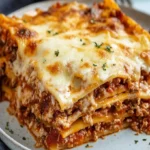
Classic Tuscan Lasagna Recipe – Authentic Italian Dish
Description
Welcome to a taste of authentic Italy! Today, we’re diving into a beloved dish, the Classic Tuscan Lasagna. This hearty recipe will transport you straight to a traditional Tuscan kitchen, where families gather for Sunday lunch or holiday feasts to savor the rich flavors of homemade Ragù and creamy Béchamel sauce.
Ingredients
- 3 lbs Tuscan Ragù (see notes for recipe)
- 1 package of lasagna sheets (about 4 portions of fresh pasta)
- 2 cups Parmigiano cheese, grated
For the Béchamel sauce:
- 4 cups milk (room temperature or warm)
- ½ cup butter
- ½ cup flour
- Salt, to taste
- Black pepper, to taste
- Nutmeg, ground (a pinch)
Optional Substitutions:
- For a gluten-free option, use gluten-free lasagna sheets and replace regular flour with a gluten-free alternative.
- To make it dairy-free, substitute butter with vegan margarine and use a plant-based milk of your choice.
Instructions
Step 1: Prepare the Béchamel Sauce
- In a medium-sized pot, melt the butter over low heat. Once fully melted, add the flour and stir continuously to form a paste (roux).
- Cook the roux for 1-2 minutes until it starts to thicken.
- Gradually whisk in the warm milk, making sure to break up any lumps.
- Let the mixture simmer for 15-20 minutes, stirring occasionally until the sauce thickens enough to coat the back of a spoon.
- Season with salt, black pepper, and a pinch of nutmeg for a warm, earthy flavor.
Step 2: Assemble the Layers
- Preheat the oven to 200°C (400°F).
- Spread a thin layer of Béchamel sauce on the bottom of a baking dish.
- Add a layer of lasagna sheets, followed by a generous layer of Tuscan Ragù, more Béchamel sauce, and a sprinkle of grated Parmigiano.
- Repeat the layering process, pressing down lightly after adding each pasta layer.
- Finish with a top layer of pasta, Béchamel sauce, and a final dusting of Parmigiano cheese.
Step 3: Bake the Lasagna
- Place the lasagna on the middle rack of the oven.
- Bake for 35-40 minutes until the top is golden and crispy.
- If the crust needs more crunch, finish it under the broiler for 3-4 minutes. If it’s browning too quickly, cover it loosely with foil.
Equipment

2Pcs Heart Shape Cake Pans, Aluminum Heart Cake Mold, Reusable 10 inch
Buy Now →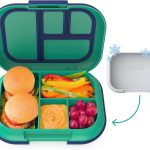
Kids Chill Leak-Proof Lunch Box – Included Reusable Ice Pack Keeps Food Cold
Buy Now →Notes
- Use fresh pasta sheets: Fresh pasta sheets provide a softer texture and absorb more of the rich flavors. If using dried pasta, pre-cook the sheets for a few minutes.
- Don’t skip the nutmeg: Nutmeg adds a warm, nutty undertone to the Béchamel, making it taste even more authentic.
- Let the lasagna rest: Allow the lasagna to sit for 10 minutes after baking. This helps the layers set and makes it easier to slice.
